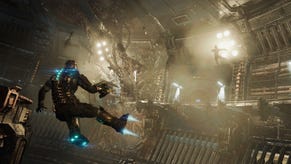The secret to Dead Space’s intense horror? The way it controls your breath
If you’re wondering how the Dead Space remake manages to get in your head and under your skin… check your breath.
In the original Dead Space, it was very much the intent that you would live in Isaac’s big, heavy, stompy boots. From the second you took control of his tortured body and failing mind, the designers at Visceral wanted you to really embody him. To live through his horror, to see this ruined world in the same way he does. It’s not enough to subject you to what he sees – the plague of Necromorphs eating away at the heart of the USG Ishimura. No, Visceral wanted to go deeper than that. Through the eyes, and into the brain.
// video // - Dead Space (2023) isn’t just a treat for the eyes; it’s a whole body experience.And it worked. In the original game, there was a system in place that mimicked Isaac’s breathing and heart rate. If there was a scripted scare coming up, or if you’d taken a lot of damage, or had run from some unknowable terror deep in the guts of the ship, his heart rate would increase and his breathing would become ragged.
In the original, 2008 release of the game, this system was rudimentary – but effective. There were only a few states for both heart rate and breathing that could be, more or less, organised into three distinct categories: resting, stressed, and extreme. Still, despite this fairly binary setup (where sound effects sometimes even played over each other in a kind-of sonic melee), you’d find yourself matching the breathing pumped into your headset, or broadcast from your speakers. If Isaac was on the brink of death, gasping for air with his heart rate unhealthily above resting, you’d probably find yourself getting physically excited, too. That’s what we’re like, as humans – you can’t help but empathise.
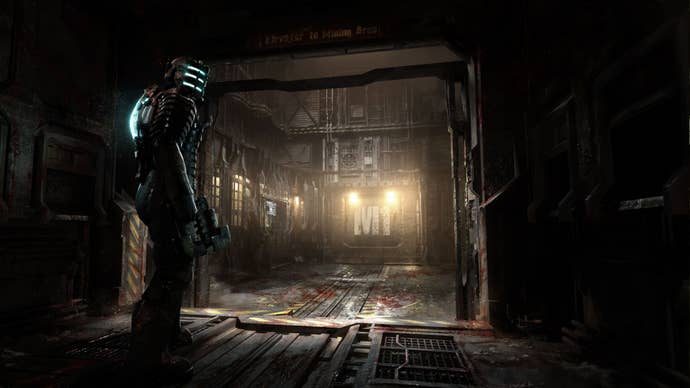
The Dead Space Remake, arriving some 15 years later, had the opportunity to build on this remarkable idea. The original game had laid the foundations for a horror experience that toyed with your body as much as it did your mind, and now EA Motive had the chance to really dive into that – to build more architecture on the solid foundations established by Visceral’s Glen Schofield and Michael Condrey back on the 360/PS3.
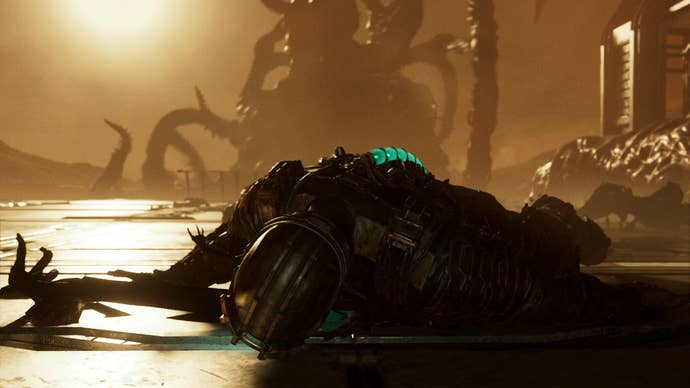
“It’s finding that sweet spot where it happens enough that you notice it,” says Roman Campos-Oriola, creative director on the Remake, when we ask him how you make a tool like this work only when necessary – so it’s not something you become attuned to, immune to. “So it depends on the atmosphere of a specific section. We want that section to be tense. You should feel like it’s hard on Issac. But! It’s not scripted. It’s a whole new system. That’s the kind of value we want.”
The Dead Space Remake uses what the devs call the ALIVE system in order to direct the horror experience. That acronym neatly breaks down into “Adrenaline, Limbic System Response, Intelligent Dialogue, Vitals, and Exertions”, and is the design bible Motive referred to when trying to recreate an authentic horror experience for you and Isaac to endure.
“The reaction is Issac’s reaction, we did not try to mimic the player’s reaction,” says Campos-Oriola, when asked whether the studio tried to predict player response when it constructed the game. “But what we tried to do with a lot of systems like the ALIVE system is we tried to make the ship more alive. That also applies to Issac — we tried to make him react in a more dynamic way.
“He reacts to more elements, like breathing and exertion, that kind of thing. The way he reacts to them; we tried to make it more immersive and widespread.”
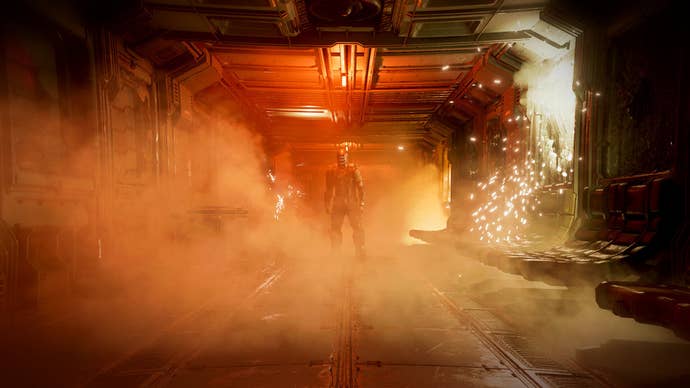
Rather than the binary way the original game dealt with exertion and response, the Remake has a more granular approach: there are more sound effects for different levels of exhaustion or damage, there are more types of breath he can take, ‘damage breathing’ won’t play over ‘exertion breathing’, and so on. The result is – the studio hopes! – a character that reacts more like a man in Isaac’s situation would, rather than a video game mannequin that has a cycle of states it could flit through.
“It’s tricky because you run a lot in the game, so it’s definitely something that you don’t want to trigger every time you sprint down a corridor. But it’s something you don’t want to hear often enough that you notice it’s there, so it impacts the atmosphere of the game. Tweaking those values has been a bit of a back and forth.”
Campos-Oriola explains that sometimes the testers would run for 10 metres, escaping a surprise encounter with a Necromorph, or something, and “Issac would go ‘HUFF HUFF HUFF’ [laughs] It’s a bit too much!” jokes Campos-Oriola. “Also sometimes you’d run around the ship in a big fight and he’d barely be breathing, and we’d be like ‘hmmm, maybe it’s not enough’.”
This iteration resulted in a system that’s more authentic and human than the one we saw in the original game. The soundtrack for the game was specifically designed to elicit feelings of anxiety and dread, and the audio programming designed around Isaac compounded that. The end result is a game that frightens and thrills you not just with action and visuals, but with sound and psychology, too.
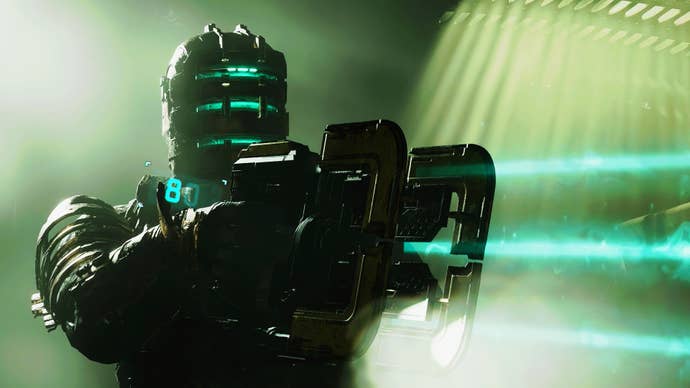
“A good example [of all this working together], for me, is the Chapter 2 Quarantine,” explains Campos-Oriola. “It’s quite a huge room with a lot of enemies. As you fight in that room, run around and kite them, find stuff in your environment to throw at them, etcetera, we want you and Issac to start breathing heavy — that’s the immersion we want to have. And we do have benchmarks throughout the game that help us set these values.”
Campos-Oriola and the rest of the team at Motive made good use of playtesters in making sure all these tiny moving parts worked in unison to get in your head as you explore the USG Ishimura. Taking the kernel of an idea and polishing it up to modern standards in this way is a unique strength afforded to Remakes of this prestige (just look at what The Last of Us, Part 1 did with accessibility), and a cast iron defence of them in the modern gaming landscape. For Motive and Dead Space, the ALIVE system is more than just a cool bit of technology; it’s the beating heart of the game’s identity.
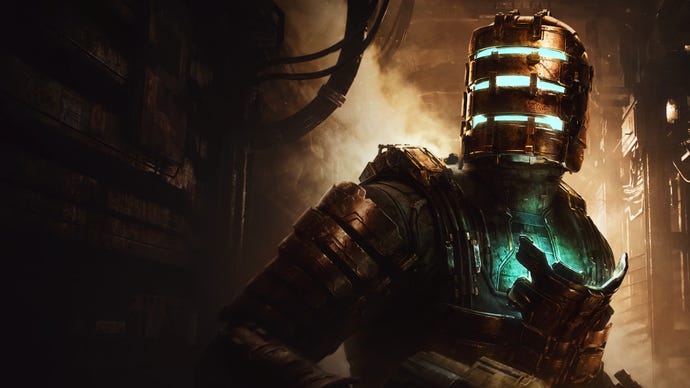



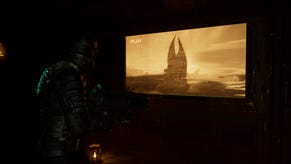
.jpg?width=291&height=164&fit=crop&quality=80&format=jpg&auto=webp)
.jpg?width=291&height=164&fit=crop&quality=80&format=jpg&auto=webp)
.jpg?width=291&height=164&fit=crop&quality=80&format=jpg&auto=webp)
.jpg?width=291&height=164&fit=crop&quality=80&format=jpg&auto=webp)
